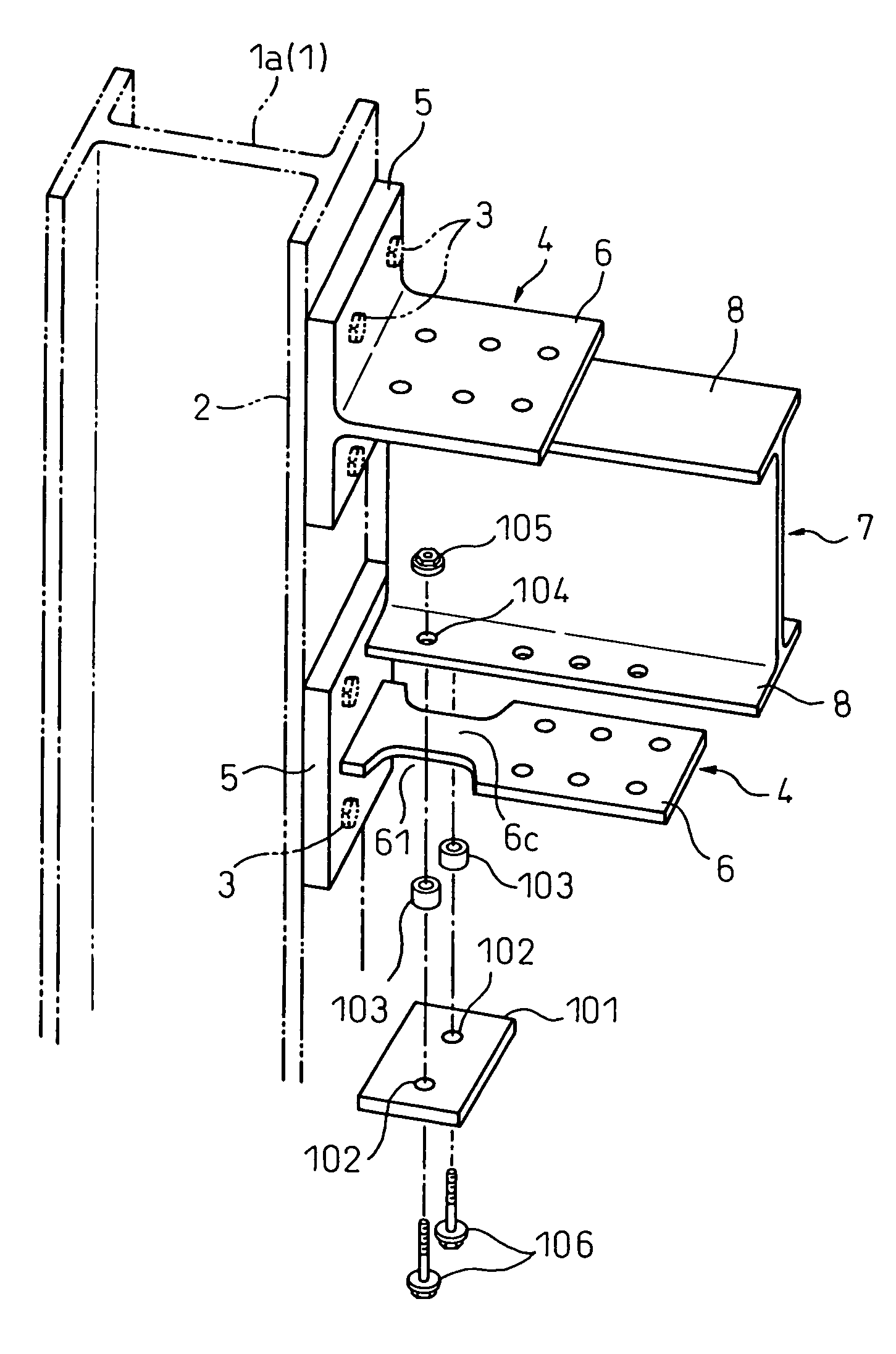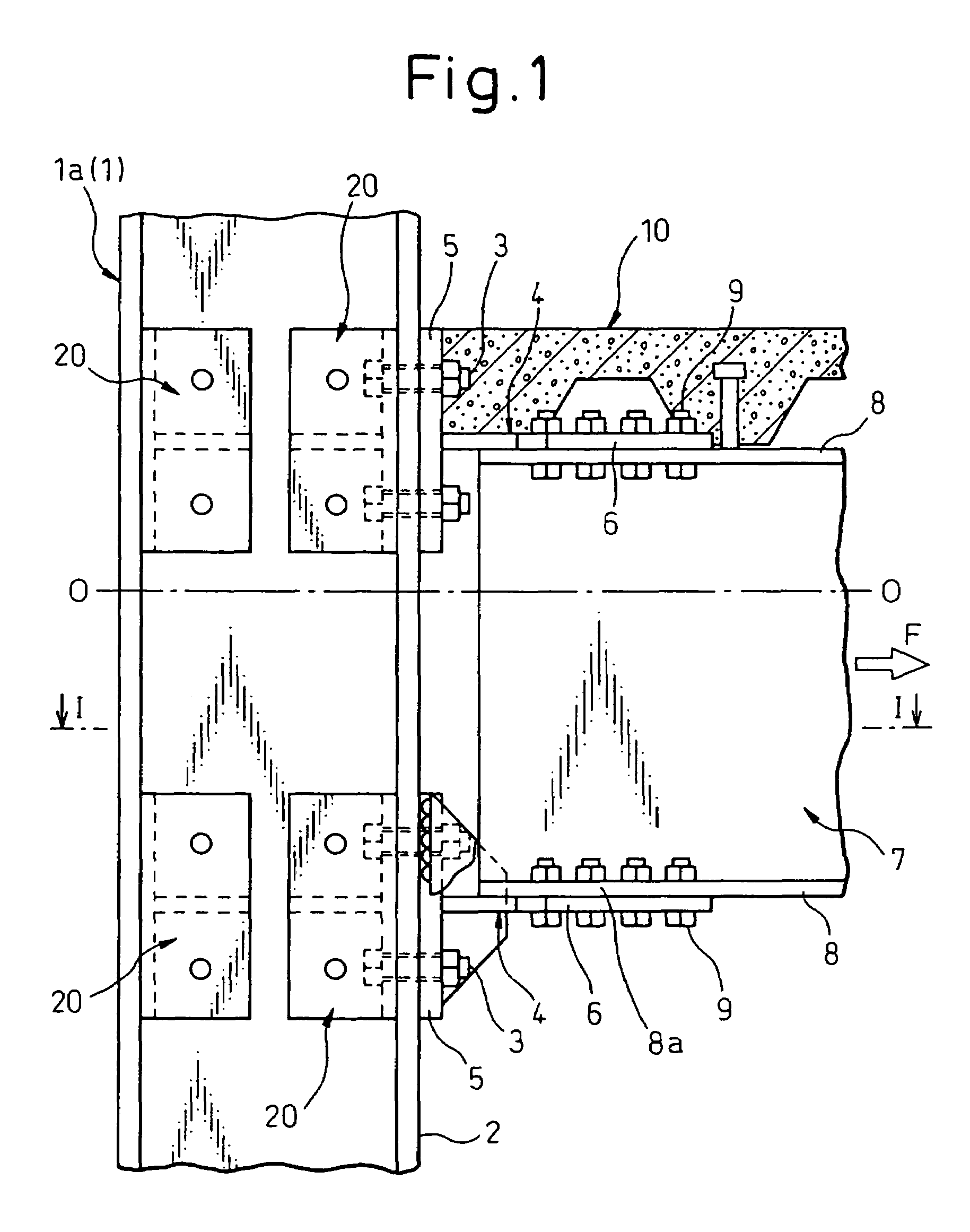Column-and-beam join structure
a join structure and column-and-beam technology, applied in the direction of girders, shock-proofing, manufacturing tools, etc., can solve the problems of inability to meet the requirements of construction, inconvenient, and ineffective energy absorption, so as to achieve the effect of the present invention
- Summary
- Abstract
- Description
- Claims
- Application Information
AI Technical Summary
Benefits of technology
Problems solved by technology
Method used
Image
Examples
Embodiment Construction
[0091]The embodiments of the present invention will be explained in detail, by referring to the drawings, hereunder. FIGS. 1 to 3 show the first embodiment of a column-and-beam join structure according to the present invention.
[0092]As shown in FIGS. 1 to 3, an H-shaped steel column 1a(1) is used as a steel column 1, the flanges 5 of a pair of upper and lower split tees 4 are connected to a flange 2 of the H-shaped steel column 1a(1) using bolts 3, and the end portions 8a of both upper and lower flanges 8 of an H-shaped steel beam 7 used as a steel beam are attached between the webs 6 of both the upper and lower split tees 4 and are connected to the webs 6 using bolts 9.
[0093]Then, a concrete slab 10 is molded on the upper flange 8 of the H-shaped steel beam 7 as a floor material, and, in this case, a conventional split tee is used as the upper split tee 4 which connects the upper flange 8 of the H-shaped steel beam 7 to a flange 2 of the H-shaped steel column 1a(1).
[0094]On the oth...
PUM
 Login to View More
Login to View More Abstract
Description
Claims
Application Information
 Login to View More
Login to View More - R&D
- Intellectual Property
- Life Sciences
- Materials
- Tech Scout
- Unparalleled Data Quality
- Higher Quality Content
- 60% Fewer Hallucinations
Browse by: Latest US Patents, China's latest patents, Technical Efficacy Thesaurus, Application Domain, Technology Topic, Popular Technical Reports.
© 2025 PatSnap. All rights reserved.Legal|Privacy policy|Modern Slavery Act Transparency Statement|Sitemap|About US| Contact US: help@patsnap.com



